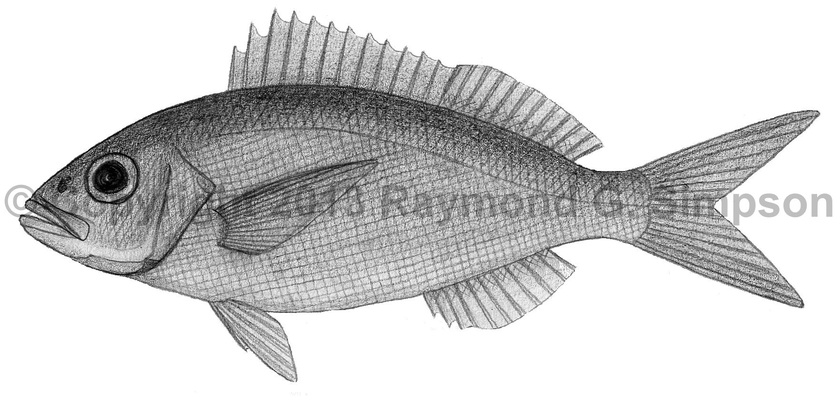
Common Name
Vermillion Snapper
Year Described
Cuvier, 1829
Identification
Dorsal Fin: XII-XIII (usually XII), 10-12 (usually 11)
Anal Fin: III, 8-9 (usually 8)
Pectoral Fin: 16-19
Gill Rakers: 8-10 upper, 19-22 lower; 27-32 total
Lateral Line Scales: 46-52
Body moderately elongate and compressed. Upper and lower jaws with a row of conical teeth. Anterior teeth enlarged. Vomerine teeth in a rhomboidal patch with a median extension that varies with specimen size. Palatine teeth an elongate band. Ectopterygoid teeth present. Soft dorsal and anal fins with scales on membranes. Maxilla scaleless. No distinct notch between spiny and soft dorsal fins. Last dorsal ray not elongated. Caudal fin forked to lunate.
Color
Dorsum bright vermillion red, becoming abruptly silvery-pink on the sides and white on the belly. Flanks under lateral line with oblique narrow golden-yellow stripes. Eye red. Dorsal fin red with yellow markings. Caudal fin red. Other fins pink.
Size
Maximum size to 63cm TL. Commonly to 40cm TL.
Habitat
Continental shelf waters and shelf edge over hard bottoms. Often forms large schools.
Range
North Carolina to Brazil, including the Gulf of Mexico and the Caribbean Sea. Also Bermuda.
References
Anderson, W.D. 2002. Lutjanidae (pp. 1479-1504). In: Carpenter. 2002. The living marine resources of the Western Central Atlantic. Vol. 3: Bony fishes part 2 (Opistognathidae to Molidae). FAO Species Identification Guides for Fisheries Purposes. American Society of Ichthyologists and Herpetologists Special Publication No. 5. FAO of the U.N., Rome.
Other Notes
Possibly represents a pelagic ecomorph of the genus Lutjanus, as opposed to it’s own monotypic genus.